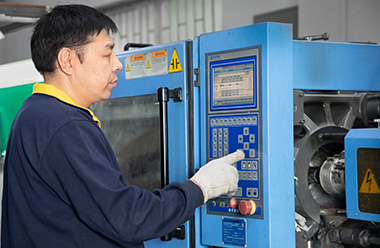There are many surface-strengthening treatment methods for injection molds, mainly carburization, nitriding, sulfurization, boron penetration, nitrogen-carbon penetration, metal penetration, and so on. The use of different surface-strengthening treatment processes can make the mold life increased by several times or even dozens of times. In recent years there has been some surface strengthening process: this article, injection molding manufacturers, focuses on four aspects of the introduction.
- ion nitriding: to improve the corrosion resistance of injection mold design, wear resistance, thermal fatigue, and anti-adhesive properties can be used ion nitriding. The outstanding advantages of ion nitriding are significantly shortening the nitriding time, controlling the organization of the nitriding layer by adjusting different gas components, reducing the surface brittleness of the nitriding layer, small deformation, smooth hardness distribution curve of the nitriding layer, and not easy to produce spalling and thermal fatigue. However, it is difficult to obtain uniform heating and uniform nitriding layer for complex-shaped molds, and the shallow nitriding layer and steep transition layer, and the temperature measurement and temperature uniformity still need to be solved.
If the temperature is too low, the layer will be too thin; if the temperature is too high, the surface layer will quickly appear loose, reducing the anti-sticky mold ability. An ion nitriding layer thickness of 0.2~0.3mm is appropriate. After the wear of the ion nitriding mold, after repair and ion nitriding again, it can be put into use, which can significantly improve the entire service life of the mold.
- Nitrocarburizing: Nitrocarburizing process temperature is low (560 ~ 570 ℃), the deformation is small, the surface hardness of the treated die steel up to 900 ~ 1000 HV, good wear resistance, corrosion resistance, high-temperature hardness, can be used for die-casting die, cold upsetting die, cold extrusion die, hot extrusion die, high-speed forging die and plastic die, respectively, can improve the service life of 1 ~ 9 times. However, the deformation often occurs after gas nitriding, and the expansion amount is about 25% of the compound thickness, which is unsuitable for precision dies before treatment must be annealed and eliminated residues.

For example, The cr12MoV steel spring hole punching concave die, by gas nitriding and salt bath vanadium treatment, can increase the die life by 3 times. Another example: 60Si2 steel cold heading screw punch, using pre-nitriding, short carbon-nitriding, direct quenching, low-temperature quenching, and higher temperature tempering treatment process, can improve the heart toughness, improve the life of cold heading punch more than 2 times.
- carbon, nitrogen, and boron ternary coextrusion: ternary coextrusion can be carried out in the nitriding furnace, infiltration agent for boron-containing organic infiltrant and ammonia, the ratio of 1:7, coextrusion temperature of 600 ℃, coextrusion time of 4h, coextrusion layer compound layer thickness of 3 ~ 4μm, diffusion layer depth of 0.23mm, the surface hardness of HV011050. by coextrusion treatment, the life of the die significantly improved.
